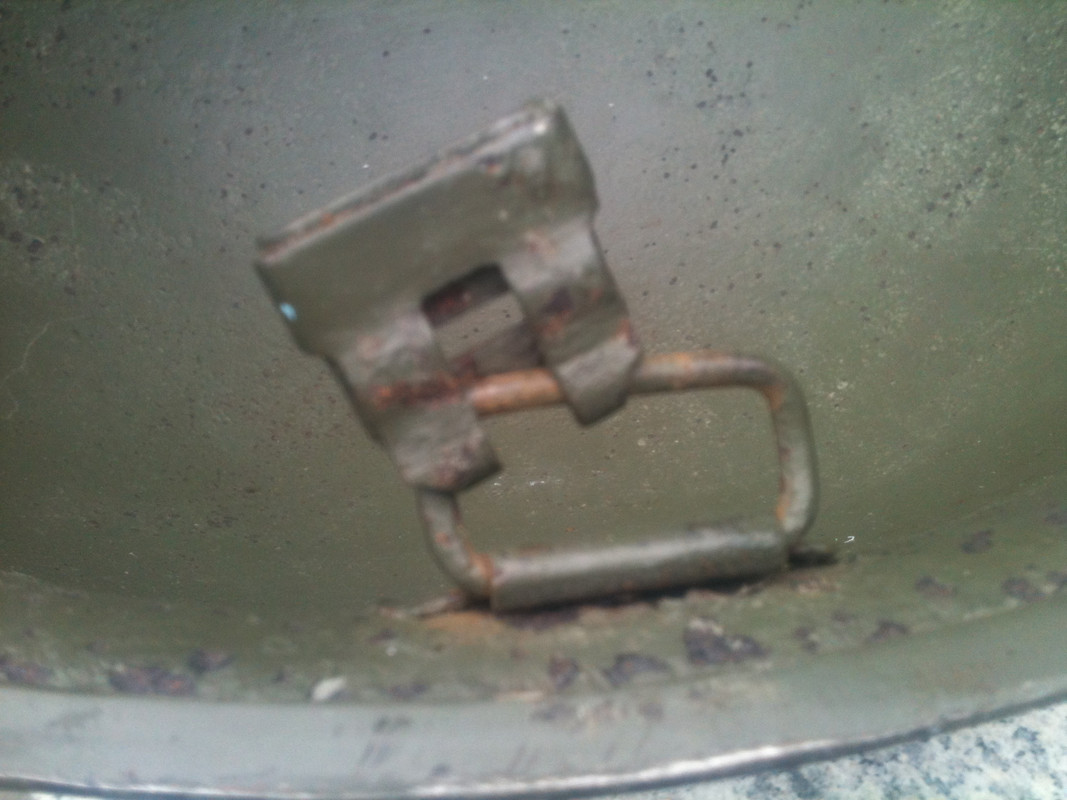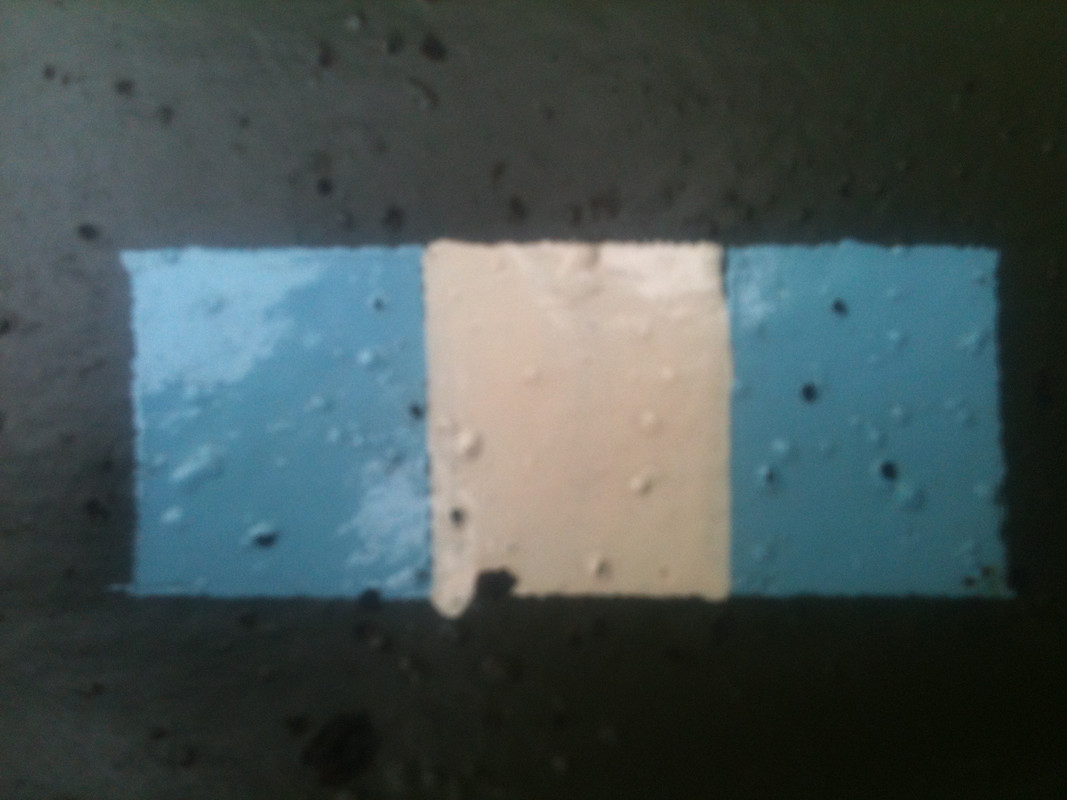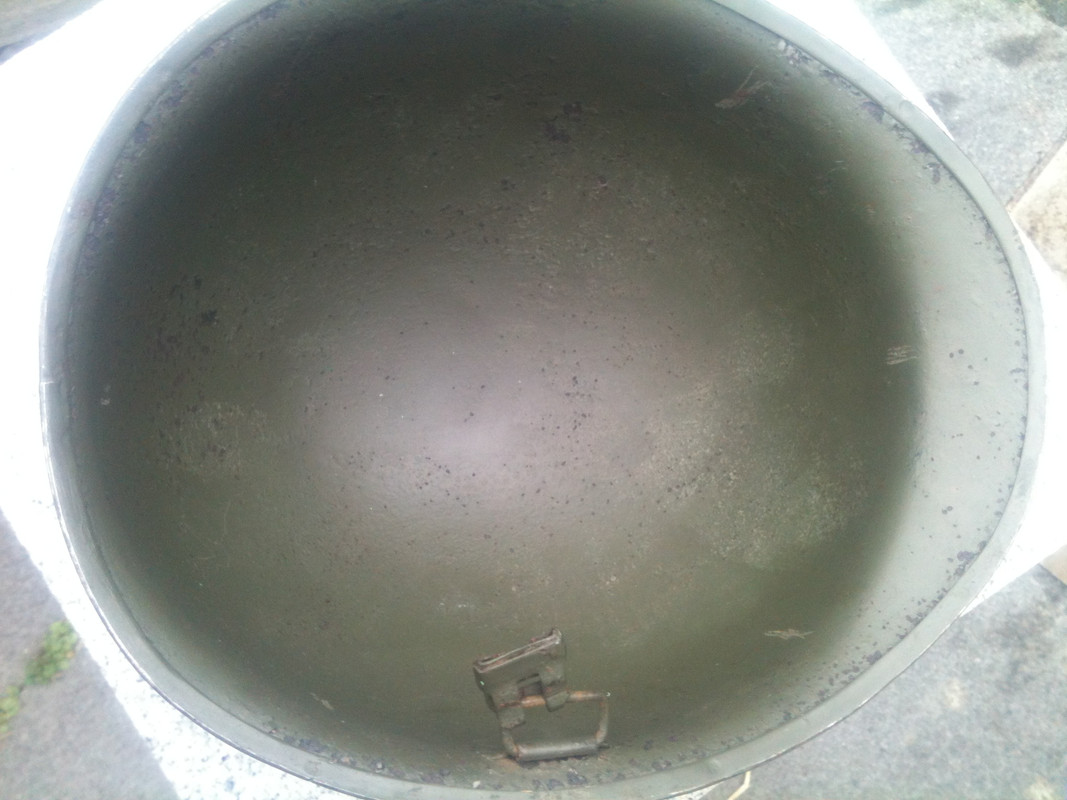He comprado este casco de eBay UK y había aconsejado que era una mala imitación. Así que para llegar a la parte inferior de la misma llevó al Departamento de investigación y desarrollo de la siderúrgica TATA que es uno de los fabricantes de acero más grandes del mundo. Esta es su conclusión;
1. el casco tiene lo que se llama corrosión uniforme de ataque que se produjo cuando el metal entró en humedad.
2. la corrosión profunda alrededor de la llanta es más concentrada porque más agua hubiera sentado y penetraron en esta zona. Al parecer UAC es más frecuente en contacto con el agua salada, humedad.
3. la corrosión inicial había causado una fina capa de óxido resistente a la humedad
4. la profundidad y el color de la corrosión es consistente con lo que ocurre hace aproximadamente 20-30 años. Pueden ser más precisos pero es costoso hacerlo!!!!!!
5. el microscopio demostró categóricamente que la pintura sólo está presente en la superficie de metal corroído y que hay debajo del metal levantado que indica que fue pintada antes de la iniciar la corrosión. También era claro que había una sola capa de pintura, sin imprimación o pintura a base de otra. El pequeño pedacito de pintura azul que rasparon el accesorio barbijo demostrada que el azul había lixiviado en el verde, mientras que el verde no fue completamente curado (algo no visible al ojo desnudo). Así pintó al mismo tiempo no años de diferencia! Al parecer la pintura endurece y cura a diferentes velocidades en diferentes materiales. También el ambiente tiene un efecto.
6. la nueva oxidación ha sido provocado porque el casco había sido almacenado en un ambiente seco (el listado dijo un hallazgo loft) y ahora con nueva humedad entrando roto áreas de corrosión (rompe barrera de óxido) es susceptible a la roya más en las zonas afectadas.
7. las áreas blancas a lo largo de la llanta son cloruro de sodio que confirmó fue la sal de mar en lugar de sal mineral ya que tiene una composición química diferente.
Algo que encontré muy interesante era la diferencia entre oxidación y corrosión. Si tengo razón, seguirá la oxidación sin humedad, sólo requiere de oxígeno (que puede ser seco) y es una descomposición química de los compuestos metálicos. Moho necesita humedad y oxígeno. Todo muy técnico, pero igualmente fascinante.
Por lo tanto, una auténtica reliquia del conflicto... ¿Ahora nadie sabe nada a identificar cuándo, dónde y por quién se habría utilizado, está allí cualquiera como en Argentina?
I bought this helmet shell of eBay UK and had been advised that it was a poor imitation. So to get to the bottom of it I took it to the RESEARCH and DEVELOPMENT department of TATA steelworks who are one of the largest steel manufacturers in the World. This is their conclusion;
1. The helmet shell has what is called UNIFORM ATTACK CORROSION which occurred when moisture entered the metal.
2. The deeper corrosion around the rim is more concentrated because more water would have sat and penetrated into this area. Apparently UAC is more prevalent on contact with salty water/moisture.
3. The initial corrosion had caused a thin moisture resistant OXIDE layer
4. The depth and colour of the corrosion is consistent with it occurring approximately 20-30 years ago. They can be more accurate but it is expensive to do!!!
5. The microscope showed categorically that the paint is only present on the surface of the corroded metal and that there is none under the lifted metal which indicated that it was painted prior to the corrosion starting. Also it was clear that there was a single layer of paint, no primer or other base paint. The small bit of blue paint that they scraped of the chinstrap fitting showed that the blue had leached into the green whilst the green was not fully cured (something not visible to the naked eye). So painted at the same time not years apart! Apparently paint hardens and cures at different rates on different materials. Also the environment has an effect.
6. The new rust has been caused because the helmet had been stored in a dry environment (the listing said a loft find) and now with new moisture entering broken areas of corrosion (broken OXIDE barrier) it is now susceptible to further rust in those affected areas.
7. The white areas along the rim are SODIUM CHLORIDE which they confirmed was sea salt as opposed to mineral salt as it has a different chemical composition.
Something that I did find very interesting was the difference between oxidation and rusting. If I got it right, the oxidation will continue without moisture, it just requires oxygen (which can be dry) and it is a chemical breakdown of the metal compounds. Rust requires both moisture and oxygen. All very technical, but all the same fascinating.
So, a genuine relic from the conflict....... Now does anybody know anything else to identify when, where and by who it would have been used, are there any like it in Argentina?









